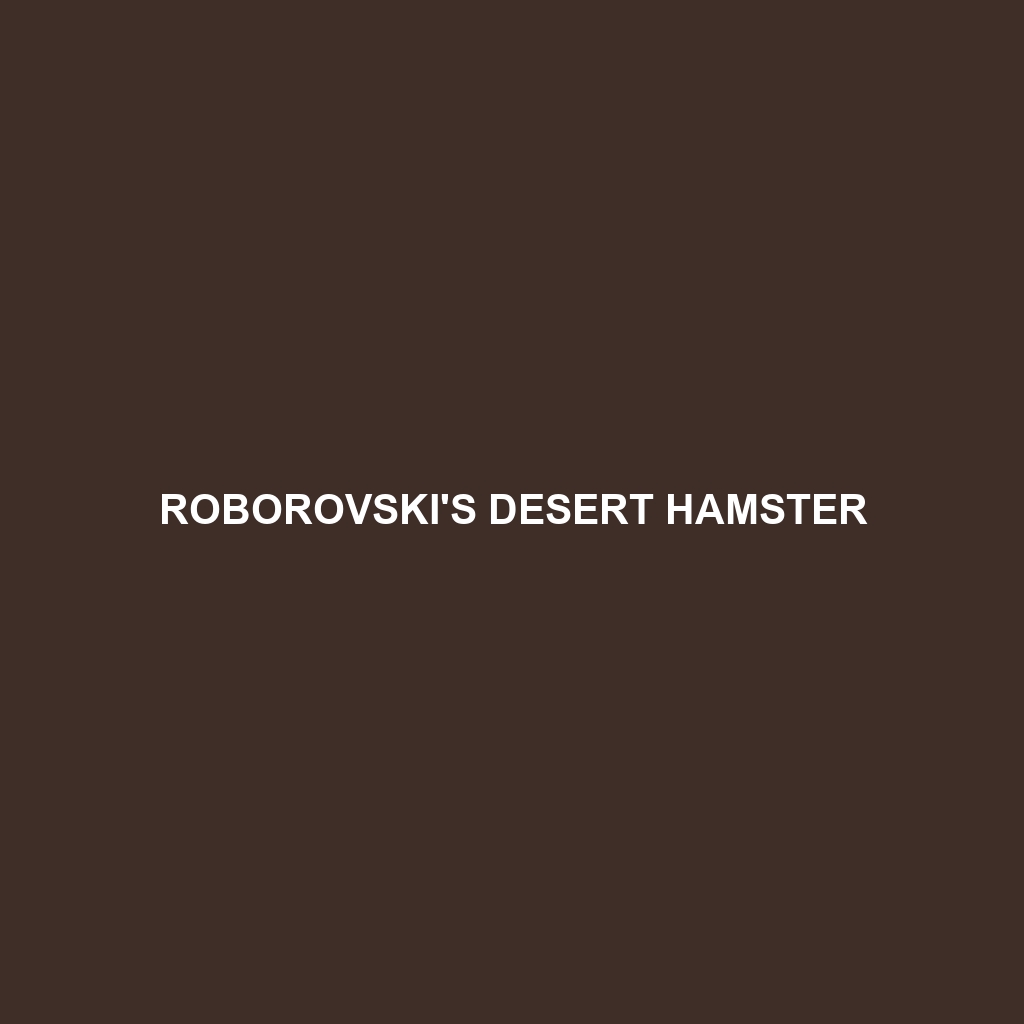Roborovski’s Desert Hamster: A Comprehensive Species Description
Common Name: Roborovski’s Desert Hamster
Scientific Name: Phodopus roborovskii
Habitat
Roborovski’s Desert Hamster is primarily found in the arid regions of Central Asia, particularly in Mongolia and northern China. This small desert rodent thrives in sandy deserts and grasslands, where it digs intricate burrows that provide shelter from the harsh climate. Its habitat is characterized by sparse vegetation, including grasses and shrubs, which offer both food and protection from predators.
Physical Characteristics
This species is among the smallest of the dessert hamsters, typically measuring about 9 to 10 centimeters in body length, with a pale sandy-brown coloration that helps it blend into its environment. Roborovski’s Desert Hamster has distinctive white underparts and small, rounded ears. Its large, expressive eyes are adapted for nocturnal activity, making it an endearing choice for pet enthusiasts.
Behavior
Roborovski’s Desert Hamster is known for its playful and energetic behavior. These hamsters are highly social and often live in small family groups. They are primarily nocturnal, engaging in activities such as foraging and social grooming during the night. This species exhibits unique burrowing behaviors, creating elaborate tunnel systems that help maintain their microhabitats and escape from predators.
Diet
The diet of Roborovski’s Desert Hamster primarily consists of seeds, grains, and plant material. They are known to forage for food and store supplies in their burrows to ensure survival during scarce conditions. Their feeding habits play a vital role in the ecosystem, as they help in seed dispersal and contribute to soil aeration.
Reproduction
Roborovski’s Desert Hamster breeds throughout the year, with peak breeding seasons occurring in spring and fall. After a gestation period of about 20 to 25 days, females typically give birth to a litter of 3 to 7 pups. Notably, the young are weaned within 3 weeks and become independent shortly after, often leaving the burrow to explore their surroundings.
Conservation Status
Currently, Roborovski’s Desert Hamster is classified as ‘Least Concern’ by the International Union for Conservation of Nature (IUCN). However, habitat loss due to human activities and climate change poses potential threats to its population. Conservation efforts are essential to ensure this charming species continues to thrive in its natural habitat.
Interesting Facts
Roborovski’s Desert Hamster is often referred to as the ‘cute hamster’ due to its tiny size and friendly disposition. This species is also one of the fastest hamsters, capable of running short distances at remarkable speeds. They are often kept as pets due to their docile nature and minimal care requirements.
Role in Ecosystem
In their ecosystem, Roborovski’s Desert Hamster plays a critical role as both a seed disperser and prey for various predators, including birds of prey and snakes. By sustaining plant growth through their foraging and burrowing activities, they help maintain the ecological balance in their desert habitats.

